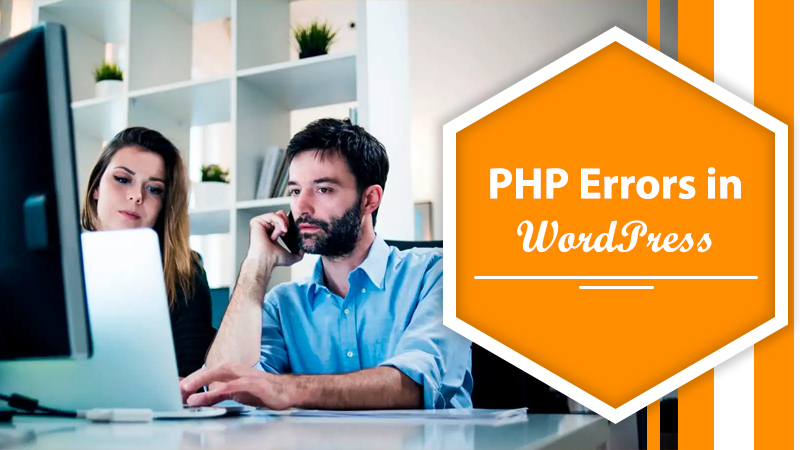
How To Proficiently Debug PHP Errors in WordPress?
WordPress is the preferable Content Management System (CMS) in today’s world when creating an eye-catching site. However, it is built upon numerous development/coding languages including PHP. Even though, PHP is the backbone of WordPress. So, when a user tries to visit a web page that contains PHP code, the code is been processed by the PHP module installed on the server. Well, somehow, processing a request can lead to PHP Errors in WordPress. This indicates that something is wrong with the PHP coding. But, that doesn’t mean these PHP errors stop your website from loading. The motto of these errors is to help developers debug issues with their code. In this blog, we will show you how to effort freely get rid of it in a couple of seconds or a minute.
What Triggers PHP Errors in WordPress?
Most PHP errors that you can see on your WordPress website are warning or fatal errors. This can damage your site. Before taking any action to resolve it, you should identify the actual reason behind it. The most feasible causes that could result in the PHP Errors WordPress issue are enumerated below. Give a glimpse:
- Most probably, there is missing a semicolon in the syntax.
- Calling up incorrect variable sometimes also lead you to experience PHP Errors in WordPress.
- Conflicts with another plugin or even a server parameter.
- Incompatible plugin or theme with the upgraded PHP version.
Disable PHP Errors in WordPress
To looking the site extremely professional, you have to disable these PHP Errors as they appear on the front-end of your site. Here’s the step-by-step procedure to turn off errors soon:
- First, open your wp-config.php file.
- Now, inside this file section, locate the “define (‘WP_DEBUG’, true);” line.
- NOTE: You can see the code “define (‘WP_DEBUG’, false);” if this line is already set to false.
- Now, you need to replace this line with the following code:
- ini_set(‘display_errors’,’Off’);
- ini_set(‘error_reporting’, E_ALL );
- define(‘WP_DEBUG’, false);
- define(‘WP_DEBUG_DISPLAY’, false);
- Now, in the end, save the changes you made and frequently upload your wp-config.php file back to the server.
You can now feel free to browse your website to confirm that the PHP Errors, notices, and warnings have been disappeared from your WordPress site.
Using Plugins To Proficiently Debug PHP Errors in WordPress
Fortunately, there are different fruitful plugins that can be used to debug PHP Errors in WordPress in no time. In this guide, we will discuss the following two plugins:
- WP Debugging plugin
- Query Monitor plugin
Plugin 1: WP Debugging
The WP Debugging is a free WordPress plugin that launches debug mode and enables error logging in WordPress. When the plugin activated, it sets the debug constants in wp-config.php file and removes them once deactivated. A PHP exception is occurred if there are any issues. These constants include:
- define( ‘WP_DEBUG’; true );
- define( ‘WP_DEBUG_LOG’; true );
- define( ‘SCRIPT_DEBUG’; true );
- define( ‘SAVEQUERIES’; true );
After you deactivate the plugin, every effort is taken to regain the state of pre-existing constants. Although, the default settings and any saved settings are immediately restored once the plugin gets activated again. Such a plugin also has a debugging section where you can configure your debugging constants. To start it with, go through the following steps:
- Go to the “WordPress Dashboard.”
- Give a click on the “Tools” menu.
- Click on the “WP debugging” submenu.
- Slightly scroll down and select the debugging constants that you wish to apply on your site.
- Now, click the “Save Changes” button to apply the changes that you made.
Now, you can strive to access your WordPress website to check if the PHP Errors have been resolved. If not, use another given plugin.
Plugin 2: Query Monitor Plugin
Query Monitor is a free WordPress plugin that helps admins to examine frontend and backend page queries. It will even alert you if any PHP bugs are in your WordPress website. To use the plugin, you have to install it properly and activate it. After doing so, a new item will appear in the top admin bar. When it detects any critical PHP Errors in the WordPress website, the toolbar will be in red.
This toolbar contains a dropdown menu with a number of options that you can use anytime to efficiently manage your site. However, this post is all about PHP errors. Hover your mouse over the recently opened “Query Monitor” toolbar and click the “PHP Errors”. That will open a window displaying all the PHP errors on your WordPress site.
Moreover, you can set an authentication cookie that enables you to view Query Monitor output when you’re not logged in or when you’re logged in as a different user. Here’re the steps to follow:
- Visit the “Plugins” section on your WordPress dashboard.
- Click on the “Settings” tab beneath the Query Monitor plugin.
- A developer console window will appear on your admin panel.
- Now, give a click on the “Set authentication cookie”.
After setting up an authentication cookie in your WordPress, you probably won’t receive PHP Errors. The site will now run without any disruption and hiccups, for sure.
Conclusion
I hope the article has helped in determining and fixing the PHP Errors in WordPress. Using the above-stated guidelines, you can fix the PHP error issue in a few minutes. If you have any confusion, contact us via 24×7 opened helpline number. The dexterous tech-geeks will assist you in every possible way to get your problem solved.
Tagged with: Disable PHP warning WordPress PHP Errors in WordPress WordPress show PHP errors-
On Time Delivery
- 50
Discount
-
24×7 WordPress Support
-
Cost Effective Services
-
Skills Wordpress Developers
-
100% Satisfaction